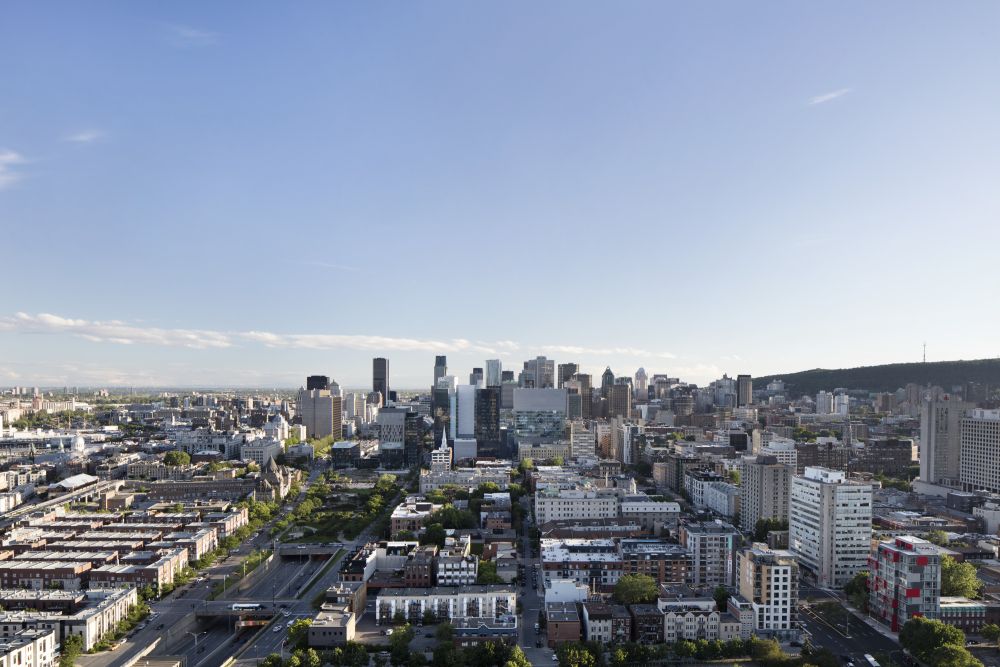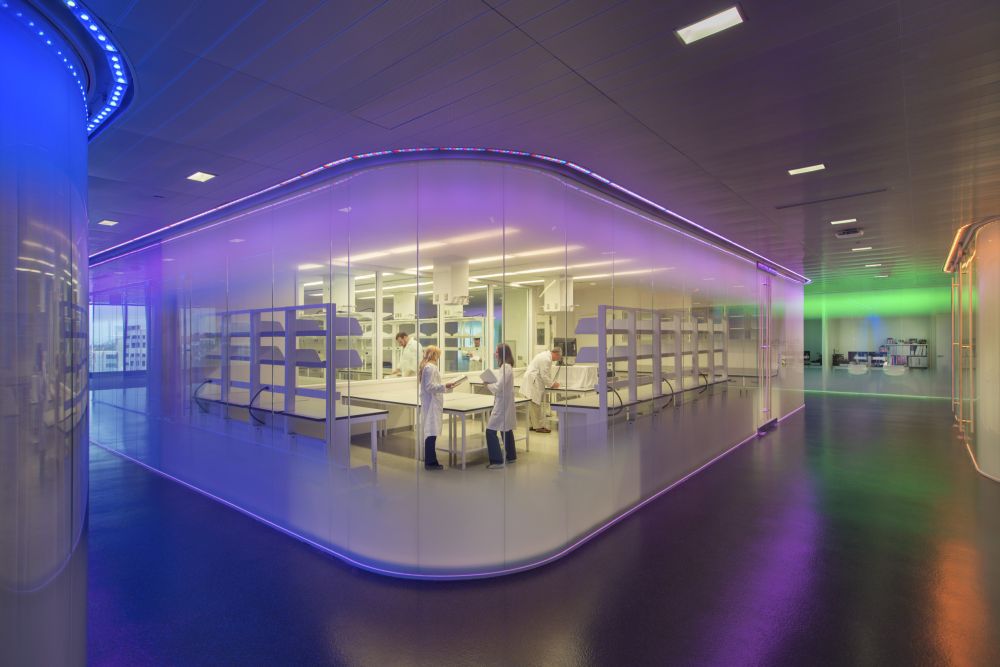Jeffrey T. Fort Neuroscience Research Building
A neural nexus for research and discovery
- Client
- Washington University School of Medicine
- Location
- Missouri, United States
- Size
- 609,000 square feet
- Status
- Completed
- LEED Gold
Alzheimer's, Parkinson's, Huntington's, ALS — these neurodegenerative diseases inflict profound suffering on so many people across the globe. Addressing these complex neurological challenges demands a fundamental shift in our approach to research. The Jeffrey T. Fort Neuroscience Research Building at Washington University School of Medicine marks a departure from conventional research models, prioritizing solutions for the most pressing issues in human health and longevity.
The overarching goal for the School of Medicine is to become the #1 ranked research program in the country for NIH funding. Designed around the concept of the physician-scientist, the new neuroscience building enables interdisciplinary collaboration while allowing researchers to be near their clinical practices. Previously, neuroscience-focused principal investigators were scattered across 30 different locations across campus. Now, the building co-locates over 100 faculty and their teams and provides room for future growth.
An urban context with translational opportunities
The architectural vision, developed in collaboration with Perkins&Will, reflects the overarching goal of promoting a holistic and inclusive research environment. Working within a very dense urban site, our design team explored how different massings could be influenced by the environment and urban conditions through parametric modeling.
The building intentionally overlaps with the Washington University Medical Center and the Cortex Innovation District. Borrowing the concept from ecology, the greatest diversity occurs in these “edge effect” conditions, and the ultimate goal of this location is to facilitate translational research partnerships with industry.
Unique organization encourages collaborative collisions
The vision for team-based science is most evident in the organization of research teams within the building. Researchers are grouped by themes — such as "Pain," "Neuro Degeneration," "Brain Tumors," "Pediatric Neuro," and "Neuro Genomics/Genetics" — rather than by department, allowing the building to transcend traditional boundaries and catalyze advancements and discoveries.
Both formal and informal collaborations are fostered throughout the building, with a variety of meeting rooms, lounges, and huddle rooms designed for frequent small interactions and private calls.
Unparalleled laboratory design
The building embodies a philosophy of team-based science by organizing researchers around thematic areas, fostering the highest degree of collaboration and flexibility in an institute-like fashion. Open laboratory neighborhoods offer prototypical wet lab bench spaces, complemented by specialized shared laboratory support zones and centralized support spaces. With 68 fume hoods and 187 benches, the facility accommodates 1,429 researchers across 187 PI teams, ensuring that the labs are structured to maximize both efficiency and flexibility.
Linking the campus
Washington University's medical campus has a complex system of elevated walkways, also known as "links" that connect key buildings. A significant architectural "link" was added in the form of a 360-foot-long pedestrian bridge that connects the top floor of the lobby to an existing parking structure. The link ensures investigators can seamlessly transition between their laboratory work in the research building and clinical duties on the medical campus — facilitating the translation of research discoveries into clinical applications













